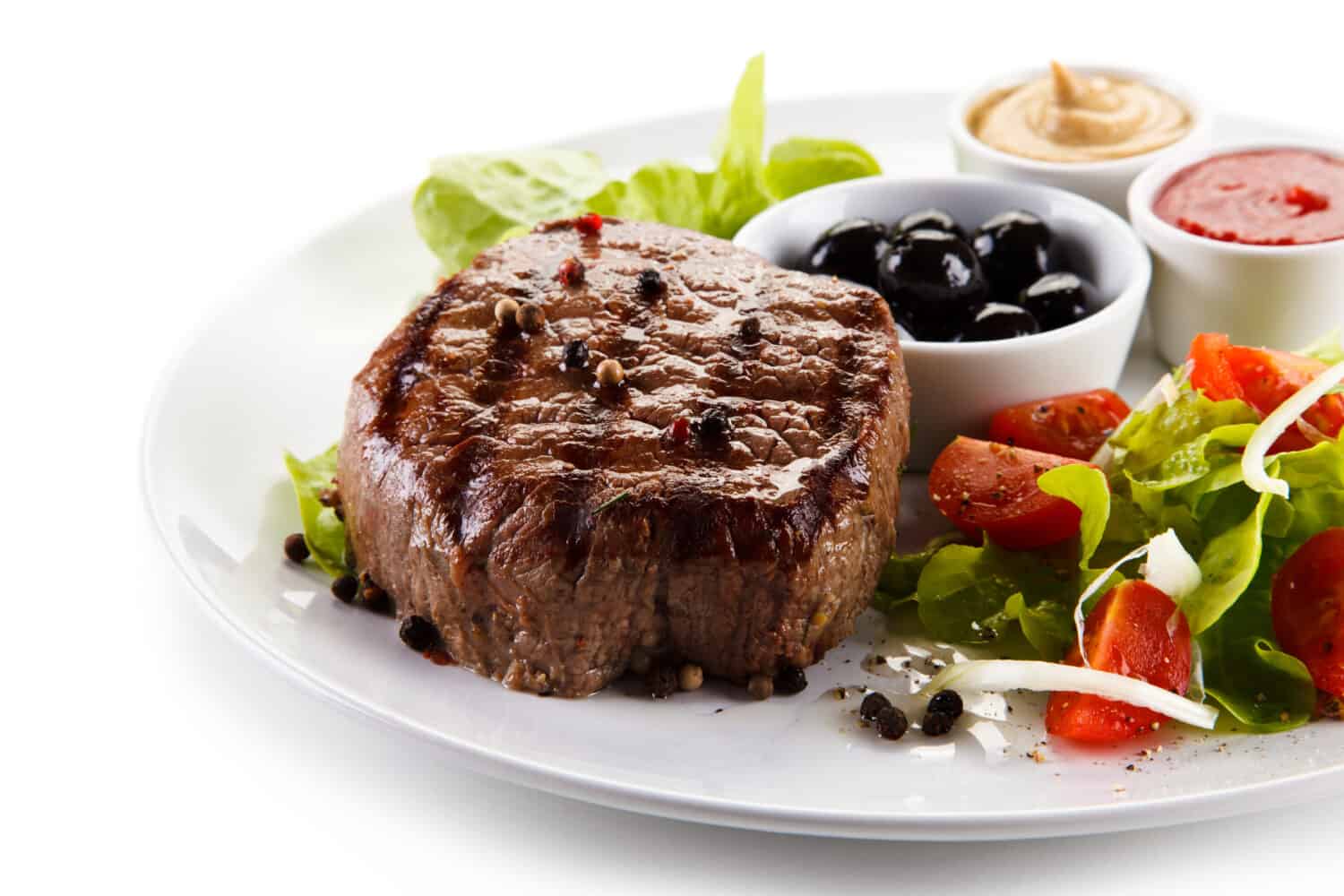Are you wondering what the difference between filet mignon and ribeye is? If you are searching for the perfect steak, it can feel overwhelming with all of the choices. Nothing quite beats walking into your favorite restaurant and eating a delicious juicy steak. However, did you know you can still produce the same savoriness you get at a restaurant at your dinner table? So many people have the questions:
- What are the differences between the cuts of meat I see in the supermarket?
- How do I cook them?
- Will I receive a juicy and tender steak, or will it be chewy?
Two of the most popular cuts of beef are filet mignon and ribeye. This post will discuss the differences between the two. Both of these are delectable, juicy cuts of meat, but there are a few key differences.
Filet Mignon vs. Ribeye: What Is the Difference?
Filet mignon and ribeye are both premium cuts of steak, but they differ significantly in size, texture, and flavor. Filet mignon is a smaller, rounded cut with a lean and tender texture, owing to its minimal fat content that appears as thin, delicate lines throughout the meat. On the other hand, ribeye is a larger, more robust cut with a rich, juicy taste due to its high-fat levels and thick, well-defined marbling. While both steaks offer a tender eating experience, filet mignon is renowned for its melt-in-your-mouth softness, whereas ribeye delivers a more flavorful and succulent bite.
Filet Mignon vs. Ribeye Nutrition: Calories, Fat, and Protein In Each
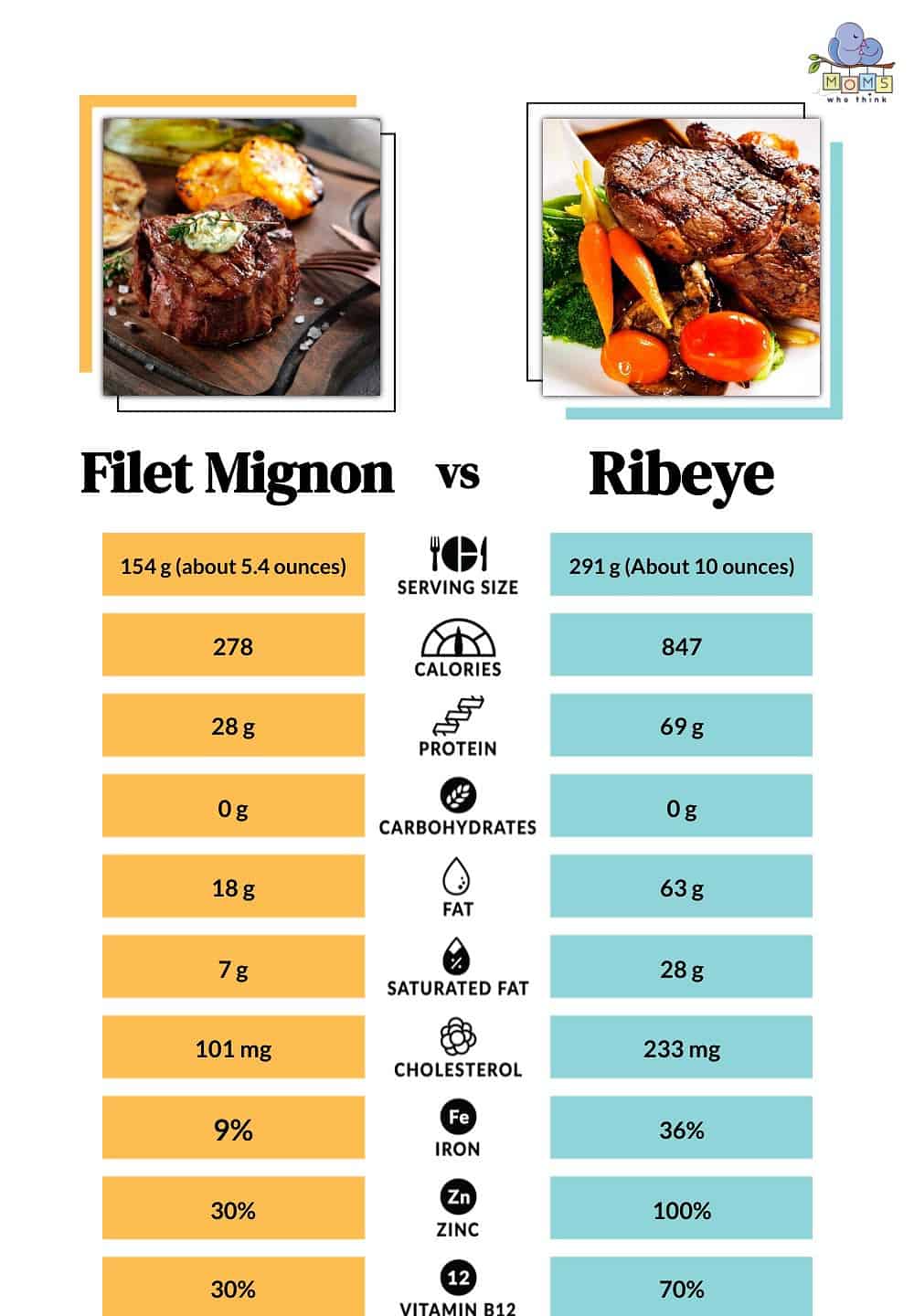
All values from the USDA. Note that the standard serving size is higher for ribeye versus filet mignon.
©/Shutterstock.com
Ribeyes generally have more fat and saturated fat per serving when compared to filet mignons. The serving size for both steaks comes from the USDA and is about 10 ounces and 5.4 per filet mignon. While ribeyes generally are a cut with more fat, the serving size of steaks in either ribeye or filet mignon will be the largest factor in determining calories.
- The must-have convenient reference guide for every home cook!
- Includes more than 8,000 substitutions for ingredients, cookware, and techniques.
- Save time and money on by avoiding trips to grab that "missing" ingredient you don't really need.
What Is Filet Mignon?
Filet Mignon comes from a part of the beef tenderloin. Often beef tenderloin and filet mignon are thought of as interchangeable. However, they are different. Beef tenderloin is a cut of meat that runs along the animal's back end and spine; it is the psoas major muscle. A filet mignon comes from the very tip of the beef tenderloin. So, it is part of the beef tenderloin, but they are, in fact, different. The beef tenderloin tip is a delicate, tender part of this muscle. There are not a lot of connective tissues inside the beef tenderloin, which means it is very juicy and tender. Filet mignon is cut into small portions, typically two and a half inches thick, and served alongside a delicacy dish such as roasted vegetables. Many consider filet mignon as a luxury meal. It is also referred to sometimes as a tenderloin filet or a tenderloin steak.
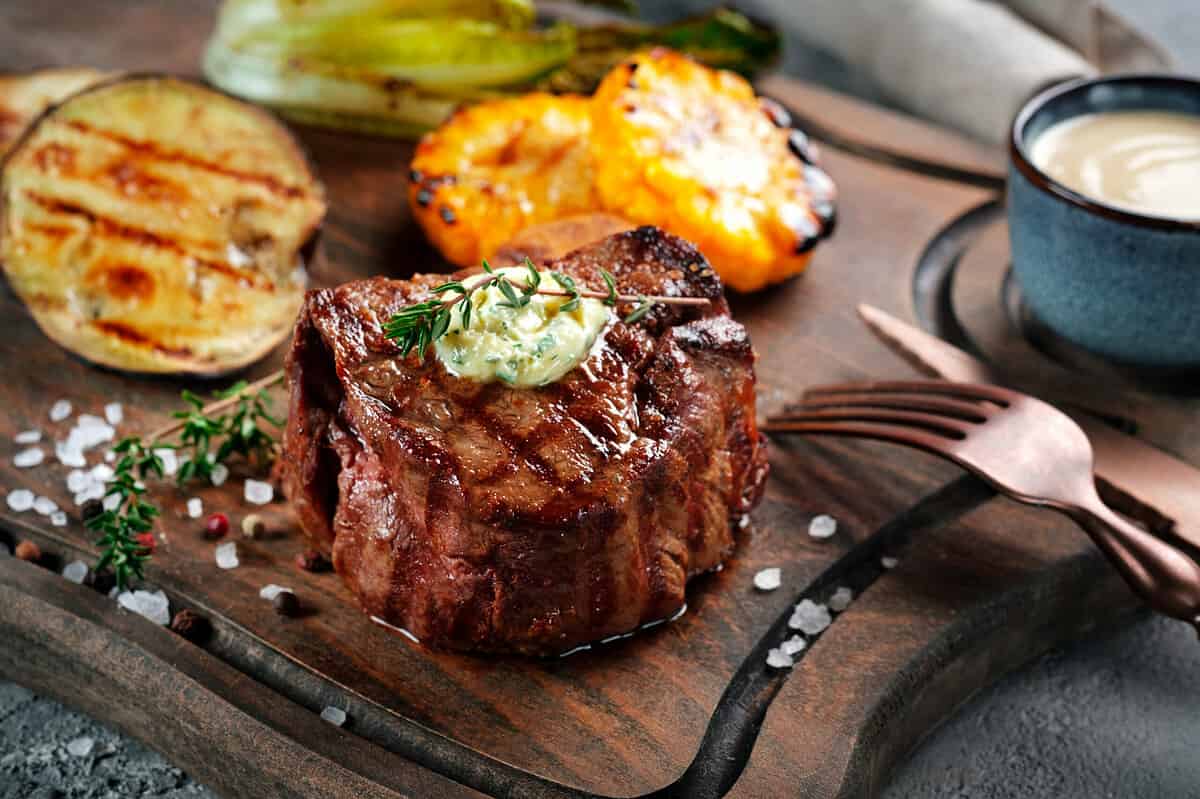
Filet mignon makes a delicious dinner served with roasted vegetables.
©Andrei Iakhniuk/Shutterstock.com
What Is Ribeye?
Now, let's talk about what a ribeye steak is. Ribeye steaks are the most common type of steak. It tends to be a favorite among steak eaters because the fat content assures it is typically juicy and easier to cook. That is because it is a primal cut of beef from the prime rib. The prime rib sits on the lower portion of the animal's ribs. Therefore, it produces a tender and succulent flavor that feels like it is melting in your mouth. In addition, the ribeye has a perfect amount of marbling, which is the fat content. When shopping for steak, looking out for the fat content is essential for many reasons:
- Marbling shows the fat content that exists in a cut of meat.
- The more fat content, the juicy the steak will be.
- Marbling also means it may be easier to cook because of the juice that it produces.
- The fat content is unsaturated and believed to be healthy.
It is also important to note that ribeye can have a bone or no bone when served.
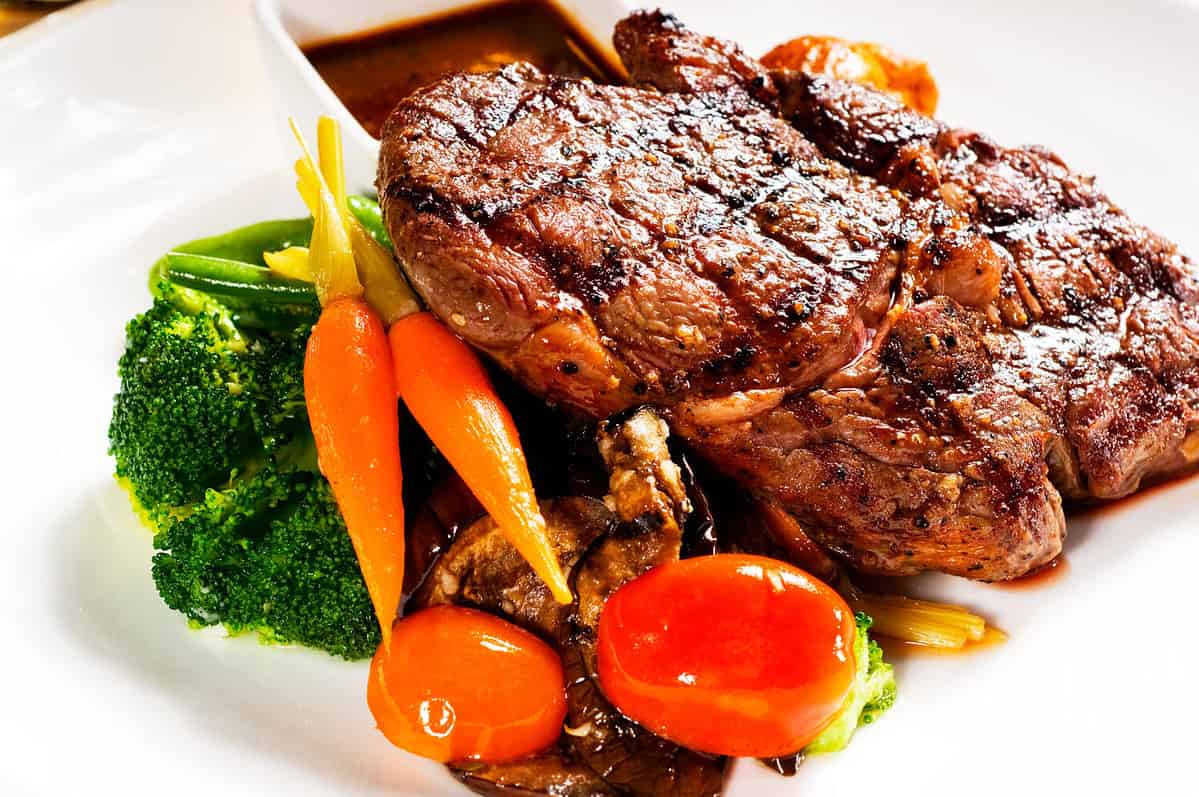
Ribeye steak is considered one of the best steaks on the market because of its beautiful marbling and juiciness. The combination produces a rich beefy taste that is hard to beat for steak eaters.
©Chatham172/Shutterstock.com
What Are the Main Differences Between Filet Mignon and Ribeye?
There are a couple of differences between filet mignon and ribeye. The first, of course, is where it is cut from. As I stated before, the filet mignon comes from the beef tenderloin, which is cut alongside the backside or the spine of a cow. Conversely, a ribeye is cut from the bottom half of the ribs and comes from the prime rib section.
Another key difference is the size between the two cuts. Filet mignon servings are smaller, around two and a half inches in size. A ribeye tends to be more significant. It can range from 12 to 15 inches. Often it is cut to feed more than one person.
The tenderness between a filet mignon and a ribeye is very similar. While filet mignon is lean and has fewer connective tissues, resulting in a tenderness that is hard to beat, ribeye, on the other hand, contains much fat content. The more fat content a piece of meat has, the juicier it will be.
Filet mignon produces a tender flavor that is quite mouthwatering. While ribeye produces a strong flavor that is rich and beefy.
How to Cook Filet Mignon
Filet mignon can be best when cooked quickly to medium or less doneness, allowing the juiciness and flavor to stay inside. Some great cooking methods are grilling, pan-frying, and placing it in the oven. Some people even air fry it. It is also possible to buy pre-portioned filets instead of cutting them directly from the beef tenderloin, making it easier on you.
How to Cook a Ribeye
Ribeyes do well when they are cooked quickly over high heat. This searing that you would do with the ribeye causes the flavor to remain trapped within the steak leading to a tender, delicate taste. Ribeye is delicious when cooking on a grill or a cast-iron skillet; this allows the outside to reach a delectable brown and the inside to remain juicy. The amount of doneness in a steak depends upon your preference, but many people enjoy medium to rare steaks because the flavor stands out and the meat will not be dry.
Are there any Tenderness Differences Between the Two?
When you are cooking steak, most people prefer juicy steaks with rich beefy flavors. So, with these two popular steaks, are there any tenderness differences? Because of the location, Filet mignon is cut from beef tenderloin, one of the most tender cuts of beef. Therefore, when cooked correctly and with great care, filet mignon can produce one of the most tender cuts of meat you will ever taste. However, ribeye steak tends to be popular because it has plenty of marbling and tenderness. Therefore the tenderness between the two is very similar while producing different tastes.
Appearance and Characteristic Differences
What are the appearance and characteristic differences between these two cuts of meat? They vary in appearance; let's take a look at how.
Ribeye Appearance
A ribeye is tender, juicy, and often filled with much marbling. Its high-fat content produces a rich, tender, beefy flavor. However, the texture is very smooth and enjoyable among many people. The rich beefy flavor is popular among steak lovers.
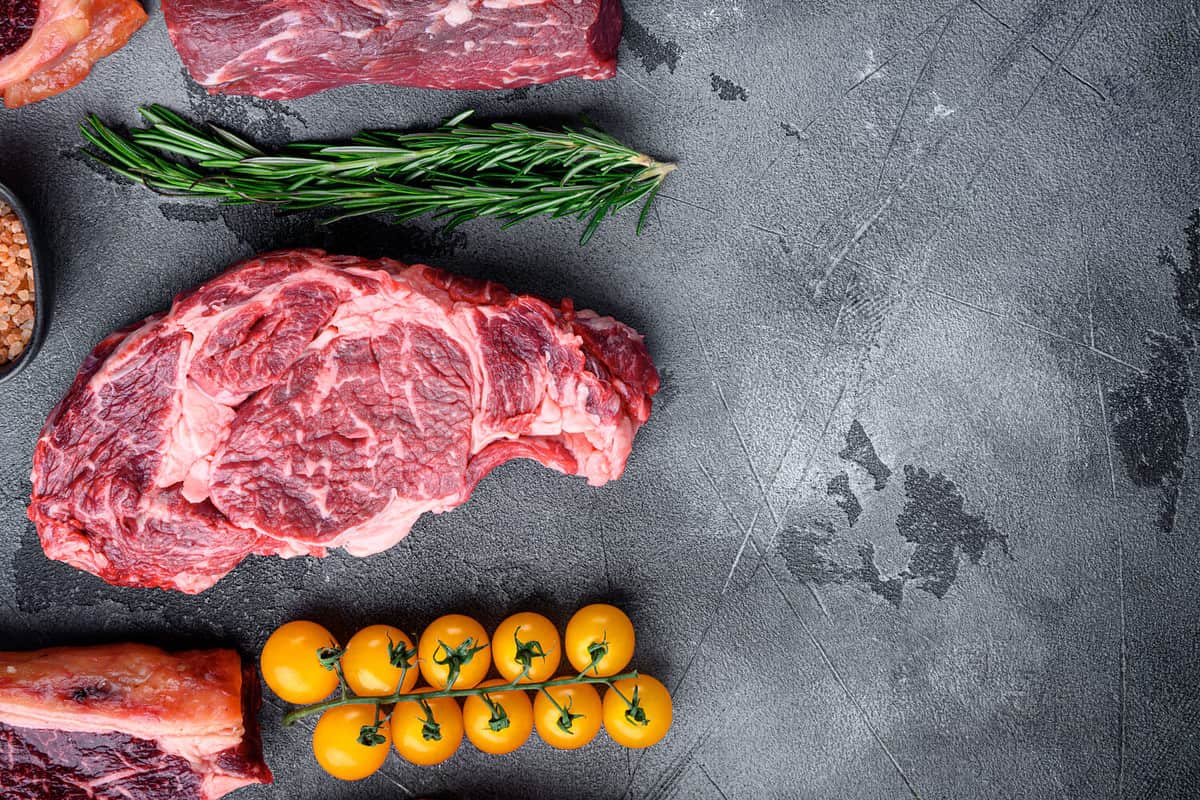
The marbling in a ribeye steak is a thing of beauty for steak enthusiasts. The more marbling, the juicier the steak will be.
©Chatham172/Shutterstock.com
Filet Mignon Appearance
Filet mignon it's also very tender because it comes from beef tenderloin. It is small in size, however, and will only feed one person. However, the size is around two and a half inches and is perfect for delectable dinners.
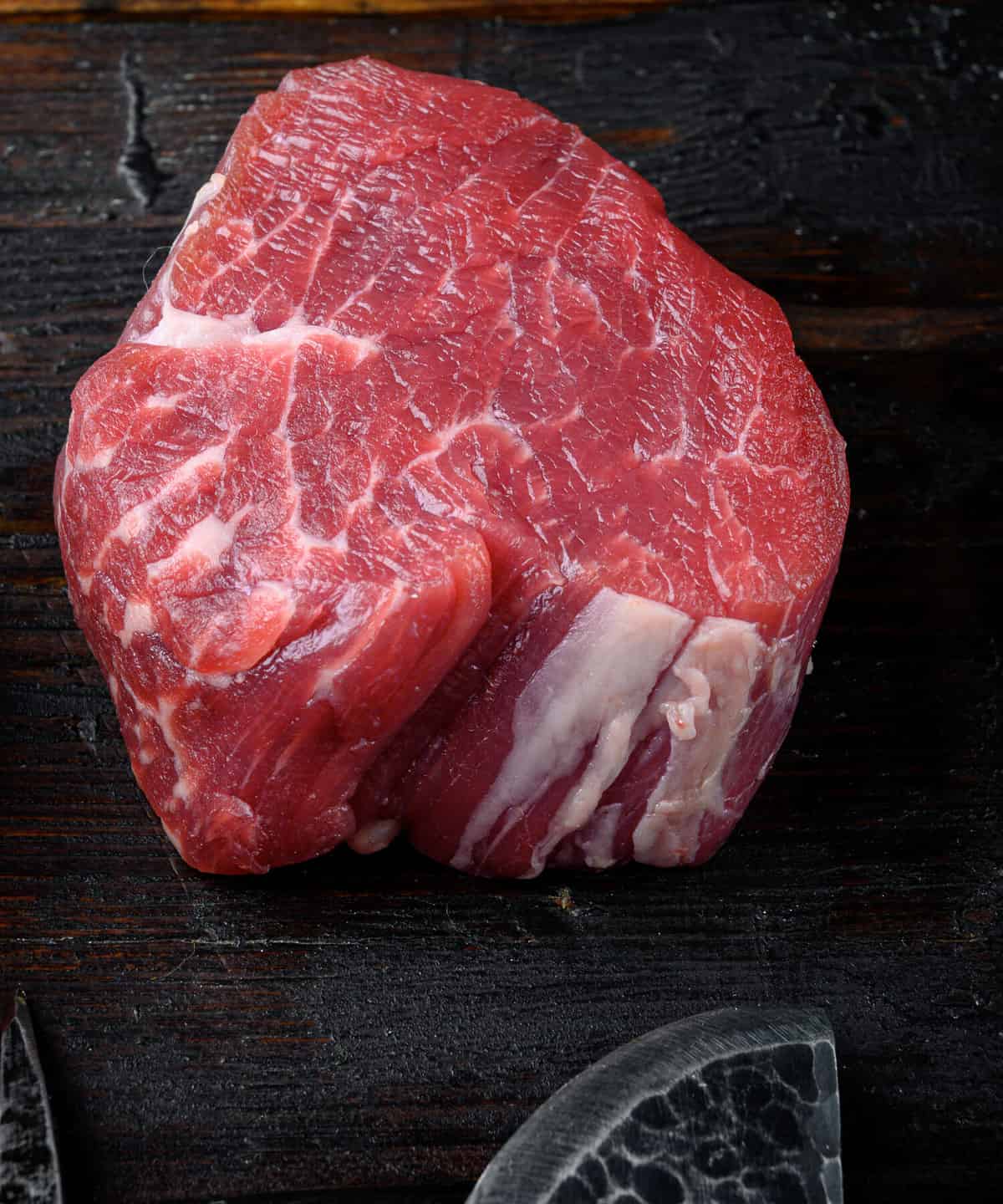
Filet mignon is smaller and perfect for a delectable dinner for two.
©Chatham172/Shutterstock.com
Should You Choose Filet Mignon or Ribeye?
Now that you know the differences between the two cuts of steak, let's talk about which one you should choose. Both filet mignon and ribeye are more expensive. This is because of the quality of meat and its availability in certain areas. Therefore, knowing your budget and how much you are willing to spend is essential when choosing between the two.
- The must-have convenient reference guide for every home cook!
- Includes more than 8,000 substitutions for ingredients, cookware, and techniques.
- Save time and money on by avoiding trips to grab that "missing" ingredient you don't really need.
On the one hand, if you are looking for delectable meat to feed a small number of people, filet mignon may be your choice. Also, it produces a very tender and juicy flavor that goes perfectly with many different sides.
On the other hand, if you want a cut of meat that will feed more people for the price, the ribeye steak is a great option. It is also highly delicate and goes with many different sides when cooked correctly. Both of these cuts of beef produce delicious meals that stick with you long after you they are over.
Steak Recipes
Print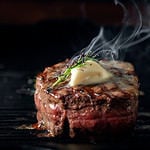
Bacon-wrapped Filet Mignon
Ingredients
12 large garlic cloves, peeled
1/4 cup olive oil
3 Tablespoons unsalted butter, cut into small chunks
Kosher salt
3 1/2 teaspoons chopped chives
1/2 teaspoon coarsely ground black pepper
1/2 teaspoon dried thyme leaves
4 (6- to 7-ounce) filet mignon steaks, about 1 inch thick
4 very thin slices of lean bacon
6-inch wooden skewers or toothpicks, soaked in water 10 minutes and patted dry
Instructions
1. Preheat oven to 400 degrees F. Place peeled garlic and olive oil in 1-cup, ovenproof ramekin, soufflé dish or custard cup. Cover dish tightly with aluminum foil and place in oven.
2. Roast on center rack until garlic is golden and very tender and soft when pierced with knife, about 30 minutes (start checking cloves after 20 minutes and then every 5 minutes until done).
3. With slotted spoon, remove garlic from bowl and reserve oil. Place garlic, 1 1/2 teaspoons of the reserved oil, butter and 1/8 teaspoon salt in food processor or blender and process, pulsing machine on and off for 30 seconds or less until garlic is coarsely chopped and blended with butter and oil.
4. Transfer garlic butter to small bowl and stir in 2 teaspoons of the chives. The garlic butter can be prepared 1 day ahead. Cover with plastic wrap and refrigerate. Bring to room temperature 30 minutes before ready to use.
5. When ready to cook steaks, oil a grill rack and prepare grill. In small bowl, stir together 1 teaspoon kosher salt, coarsely ground black pepper, and thyme. Rub both sides of each filet with some of this seasoning.
6. Wrap each steak around its sides with 1 slice of bacon. Skewer bacon in place with wooden skewer or with 2 to 3 toothpicks.
7. Grill steaks until lightly charred on the outside and until bacon is cooked, about 5 minutes per side for medium-rare. When done, remove steaks from fire and place on warm serving plate. Remove toothpicks.
8. Top each steak with 1 generous pat of roasted garlic butter and sprinkle with some of remaining chives. When the butter starts to melt, season the steaks. Serve immediately.
- Mushroom Pepper Steak Recipe
- Edamame and Steak Stir-Fry Recipe
- Pepper Steak with Potatoes Recipe
- Peppercorn Steak with Thyme Butter Sauce Recipe
One Final Note
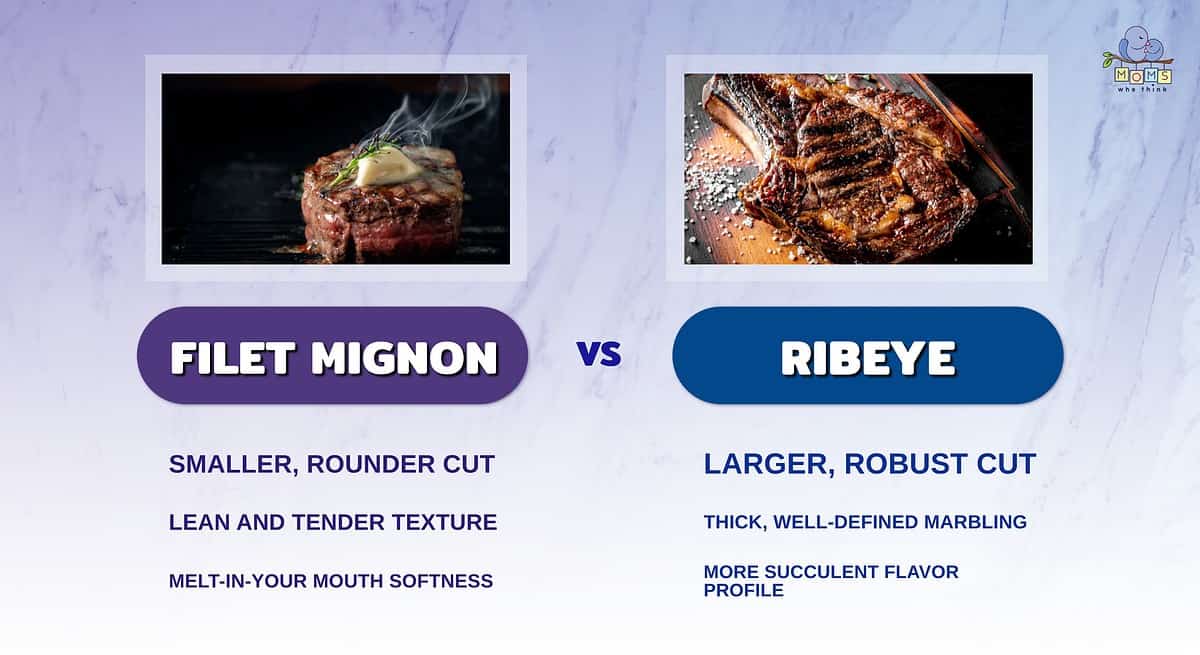
- Filet mignon is a smaller, rounder cut in comparison to ribeye. In fact, filet mignon is one of the smallest cuts of steak.
- Ribeye has thick, well-defined marbling that gives it a higher fat content than filet mignon.
- Filet mignon is famous for its buttery, melt-in-your-mouth taste, while ribeye has a succulent and robust flavor profile. Filet mignon is great for a special dinner, while ribeye might be a great pick for a hearty meal.
Either of these delicious cuts of meat is perfect for your next meal. Both filet mignon and ribeye have a tender, juicy, fantastic taste that is full of flavor because of where the cut is on the animal, and they are perfect with many different meals. When cooked correctly, both of these cuts of meat trap the flavor inside and give you a wonderful feast.
- The must-have convenient reference guide for every home cook!
- Includes more than 8,000 substitutions for ingredients, cookware, and techniques.
- Save time and money on by avoiding trips to grab that "missing" ingredient you don't really need.
The image featured at the top of this post is ©Chatham172/Shutterstock.com
